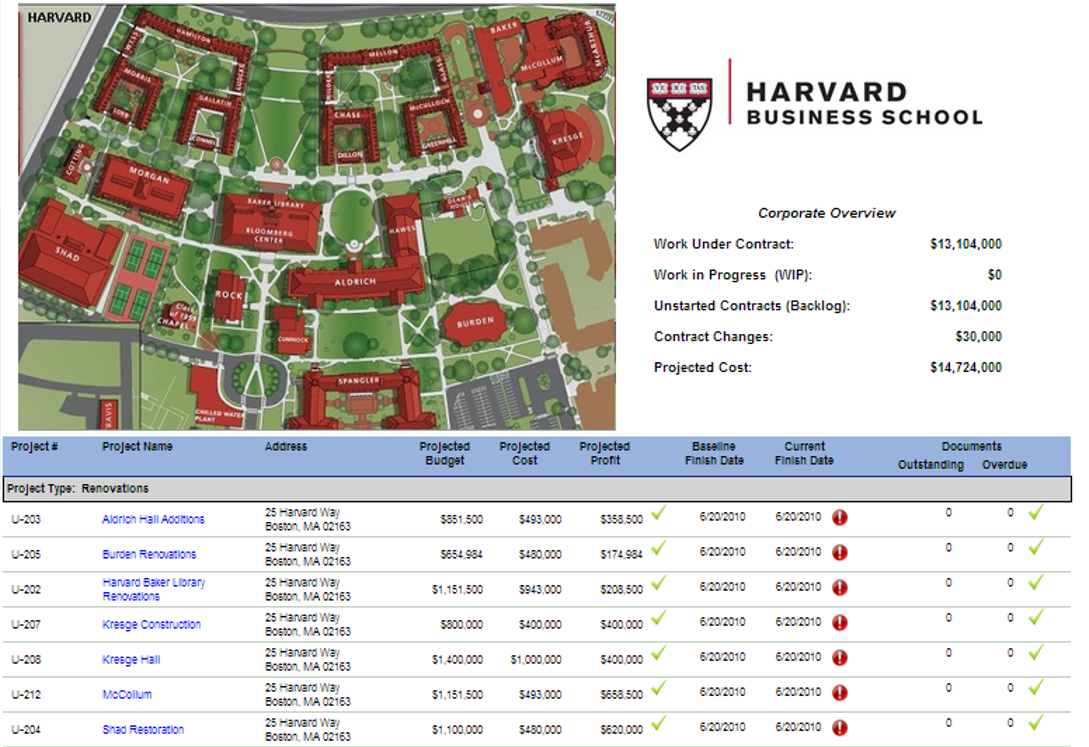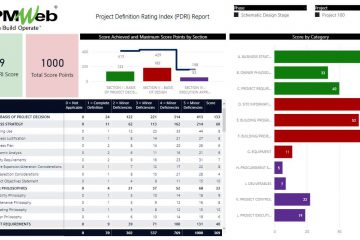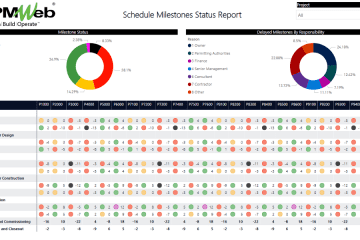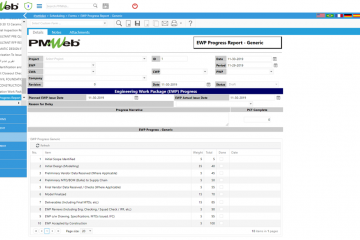There is a growing trend among countries and local government authorities to provide the private sector with long-term concessions to develop, build, and sometimes operate new cities, neighborhoods, and zones at either existing locations to replace existing cities, neighborhoods, and zones entirely new areas. Those projects are also known as greenfield projects as they will usually lack the constraints imposed on prior developments, and they will come with their development and building regulations and rules to make them attractive for the master real estate developers to develop.
The Construction Industry Institute (CII) Advanced Work Packaging best practice can align project development with the strategic goals of the master real development to ensure a successful program delivery. Like projects that adopt Advanced Work Packaging, the first step is to divide the master development into Construction Work Areas (CWA), identifying the different locations of the city, neighborhood, or zone that need to be developed. Those locations could be the commercial sectors, residential sectors, green parks, shopping centers, medical and healthcare zones, schools, utilities, roads, among others.
Those CWAs are needed to enable the real estate developer to define the Path of Construction (POC) to develop those locations. Unlike single projects that are adopting Advanced Work Packaging, the POC for master real estate development could include multiple concurrent paths to construct the identified locations. Those paths of construction will reflect the whole development strategy adopted by the master developer.
Within each location or CWA, Construction Work Packages (CWP) or projects will be identified. For each project or CWP, the master real estate developer might involve other real estate developers to develop those projects or create select purpose vehicles (SPV) to undertake those projects’ development. The master, real estate developer, might also select to produce some of those projects on his own, in particular for projects that are part of the infrastructure, parks, utilities, and other locations.
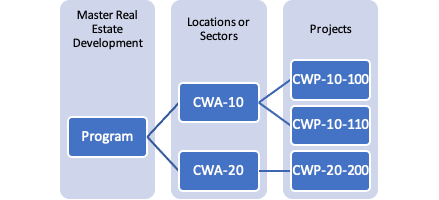
Using a Project Management Information System (PMIS) like PMWeb, all identified locations or CWA and projects or CWP will be captured in the Projects module where there will be fields for the project location and the program being the master real estate development that the project is part of.
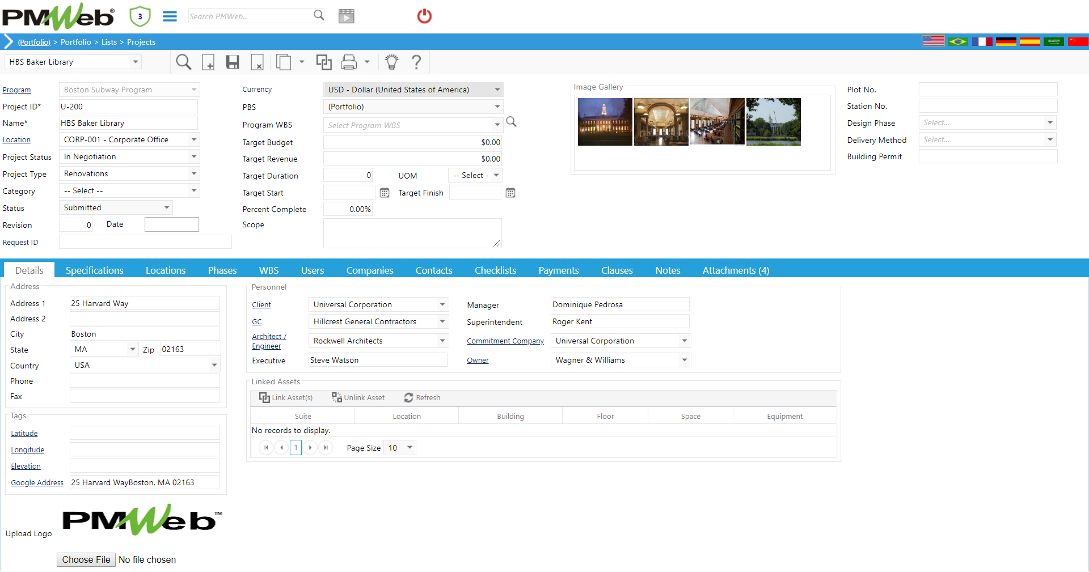
PMWeb contract module will be used to capture the contractual details between the master developer and other entities involved in the development of each project. Those could be the land parcel sale agreement to another real estate developer, long term lease agreement, among others. Those contract agreements are also known as the revenue or income contracts for the master developer. Contract agreements will also be created for projects that are still not decided on how they will be developed to capture the project land valuation, which will be part of the very much needed land bank report that the master developer needs to maintain at all times.
Like all other forms in PMWeb, the contact agreement form will be attached with all supportive documents and linked to all relevant PMWeb records and imported MS Outlook emails. Those supporting documents could include drawings, BIM models, pictures. agreements, specifications, permits, among many others, will be uploaded and stored in their relevant folders in the PMWeb document management repository.

For each project or CWP, the entity responsible for developing the project would usually assign an engineering consultant to create the project’s issued for construction (IFC) documents similar to the Engineering Work Package (EWP). Commonly, there will be a one-to-one relationship between CWP and EWP, although there could be more than one EWP for the CWP if required. PMWeb commitment module will be used to capture the details of the EWP and its associated deliverables.
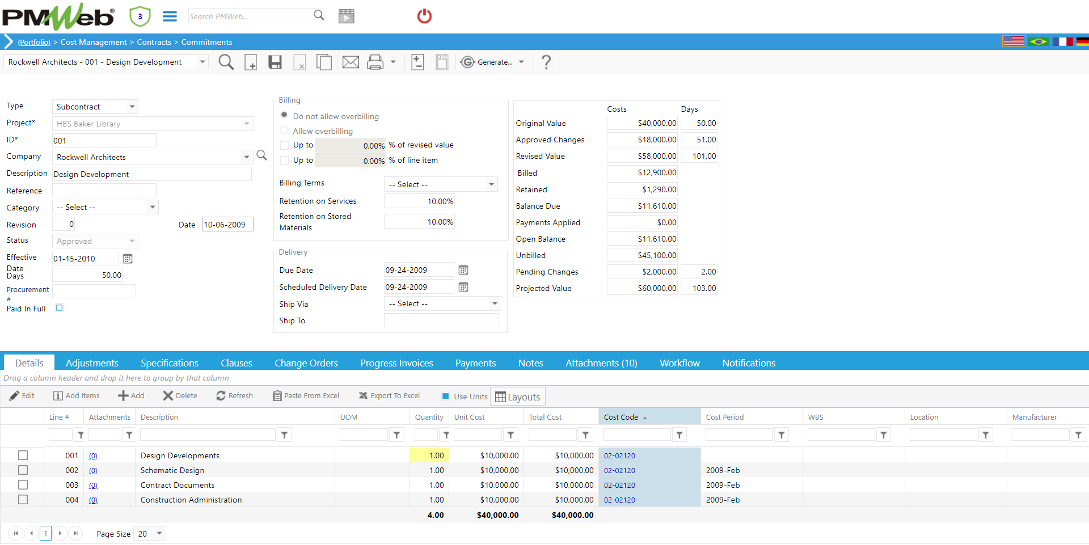
In addition, PMWeb ready to use forms as well as forms created using PMWeb custom form builder that include meeting minutes, request for information, estimates, budget, budget adjustments, design review checklists, constructability review, value engineering proposals, among many others, will be used to manage, monitor, evaluate and report on the performance of the EWP across the design stages of concept, schematic, design development and construction documents.
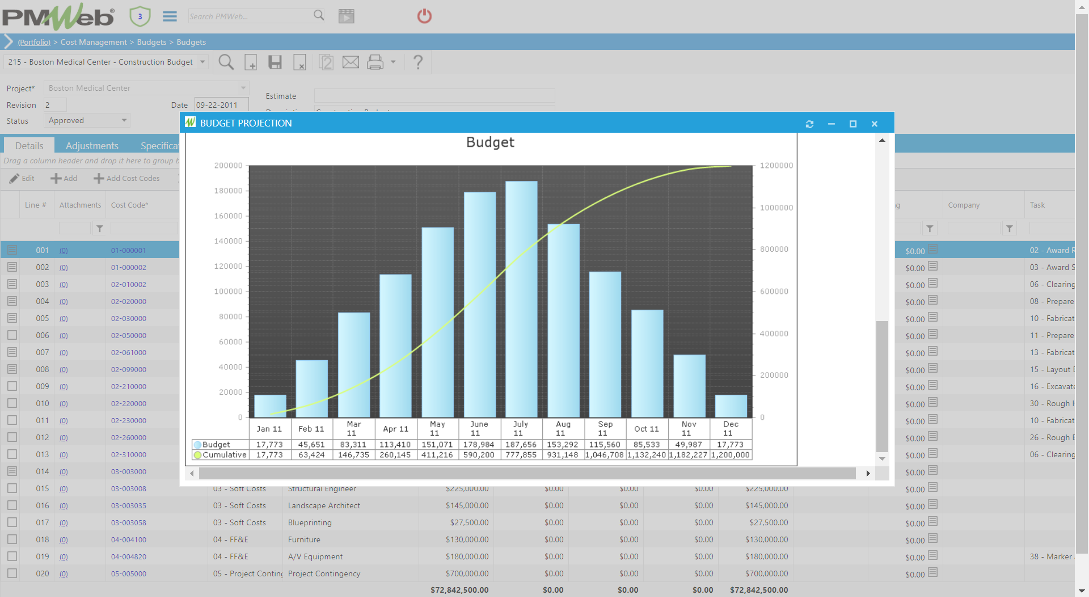
The procuring of the construction contracts will be covered under the Procurement Work Packaging (PWP). It will manage the procurement strategy whether the construction scope of work will be outsourced to a single prime contractor or multiple prime contractors. This will become the basis for detailing the project’s procurement strategy, which could involve having bid packages and eventually contract agreements for enabling works, structure, services, finishes, cladding, among others. The PWP will use PMWeb default modules as well as modules created using the custom form builder to support the processes for qualifying and shortlisting contractors to be invited, pre-bid meetings, bid queries, online bidding, bids technical and financial evaluation, post-bid queries, letter of intent, letter of award and notice to proceed processes
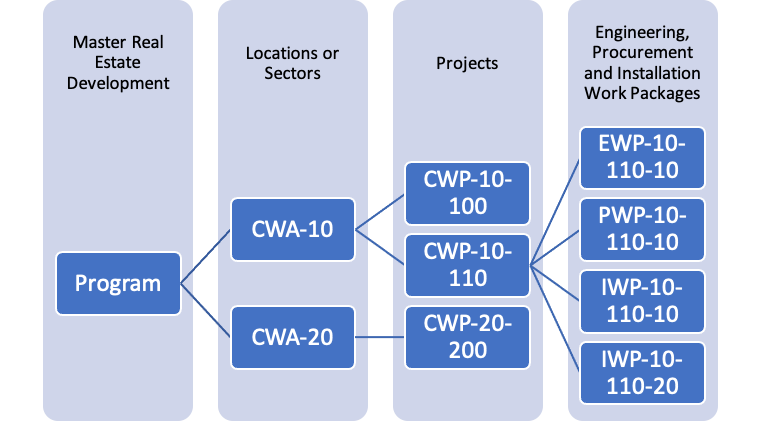
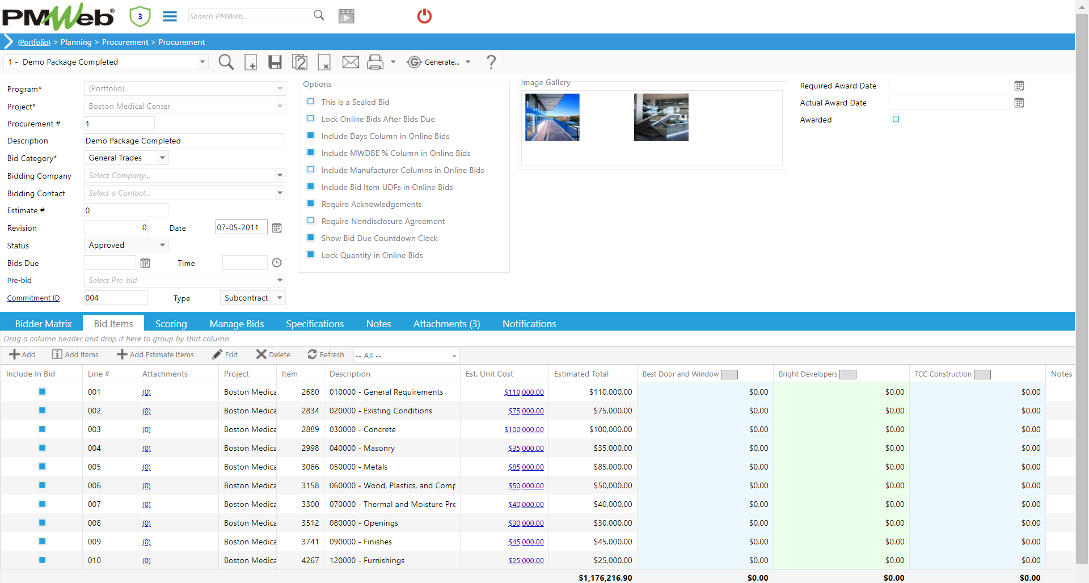
The awarded construction contracts will be the Installation Work Packages (IWP). All constraints and interferences between IWPs in case the option of multiple prime contractors were selected need to be managed to avoid any disruption or delays in delivering those work packages. Each IWP will have its commitment contract, which will be the basis for capturing, monitoring, evaluating, and reporting on all potential exposures or trends, change orders, interim progress invoices, and actual payments made against each IWP.

The data captured at each project level, which could include cost, schedule, risk, communication, quality, health, safety, and sustainability, among many others, can be aggregated and reported on at each project or CWP level as well as at each location of CWA level. For example, the cost worksheet provides a single version of the truth on each project’s income and cost, including what was planned and actual values. This information can be aggregated at each location or CWA level as well as the overall program or master development.
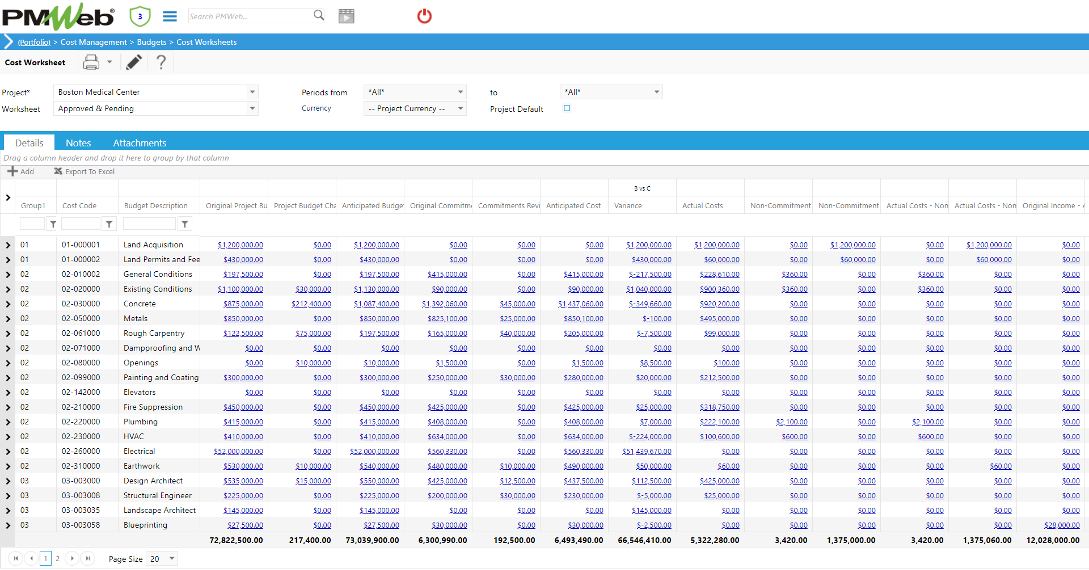
PMWeb Program module enables associating all projects or construction work packages (CWP) that are part of a specific master development. All those projects, regardless of which entity will be developing the project or its status or type, will become part of the program. There is no limit on the number of projects associated with a program. The master real estate developers who have other master developments can add as many programs as needed.
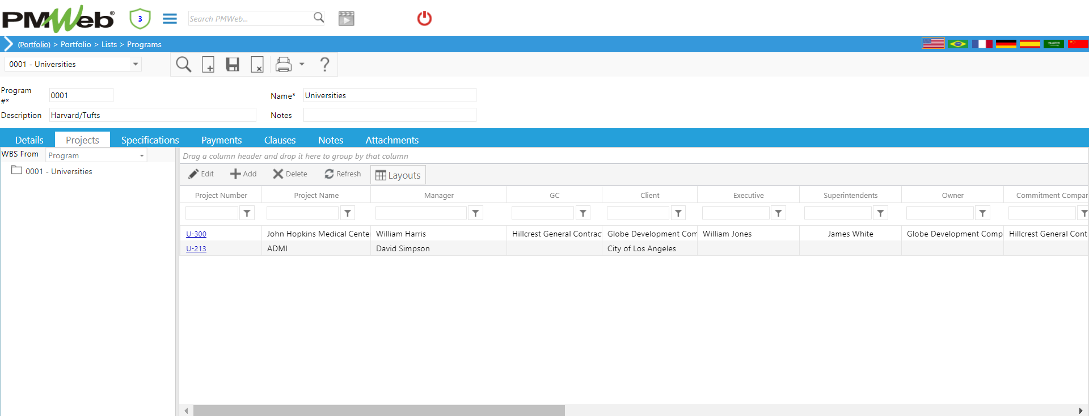
The information captured in those projects or CWPs that are associated with the master development or program can be reported on in any desired form and format. The report can group projects by location or CWA and the project development as a commercial, residential, park, roads, healthcare, and education, among others. The dashboard could include a schematic map of the real estate master development showing all locations and projects within each location.
In the tabular scorecard, the projects can also be grouped by the development method displaying the developer or SPV name. The program or master development dashboard allows the report reader to drill down to each project or CWP dashboard where more details will become available. The report reader can further drill down from the project level to more information on the project budget, commitments, change orders, actual cost, quality, risk, issues, safety, among others.
